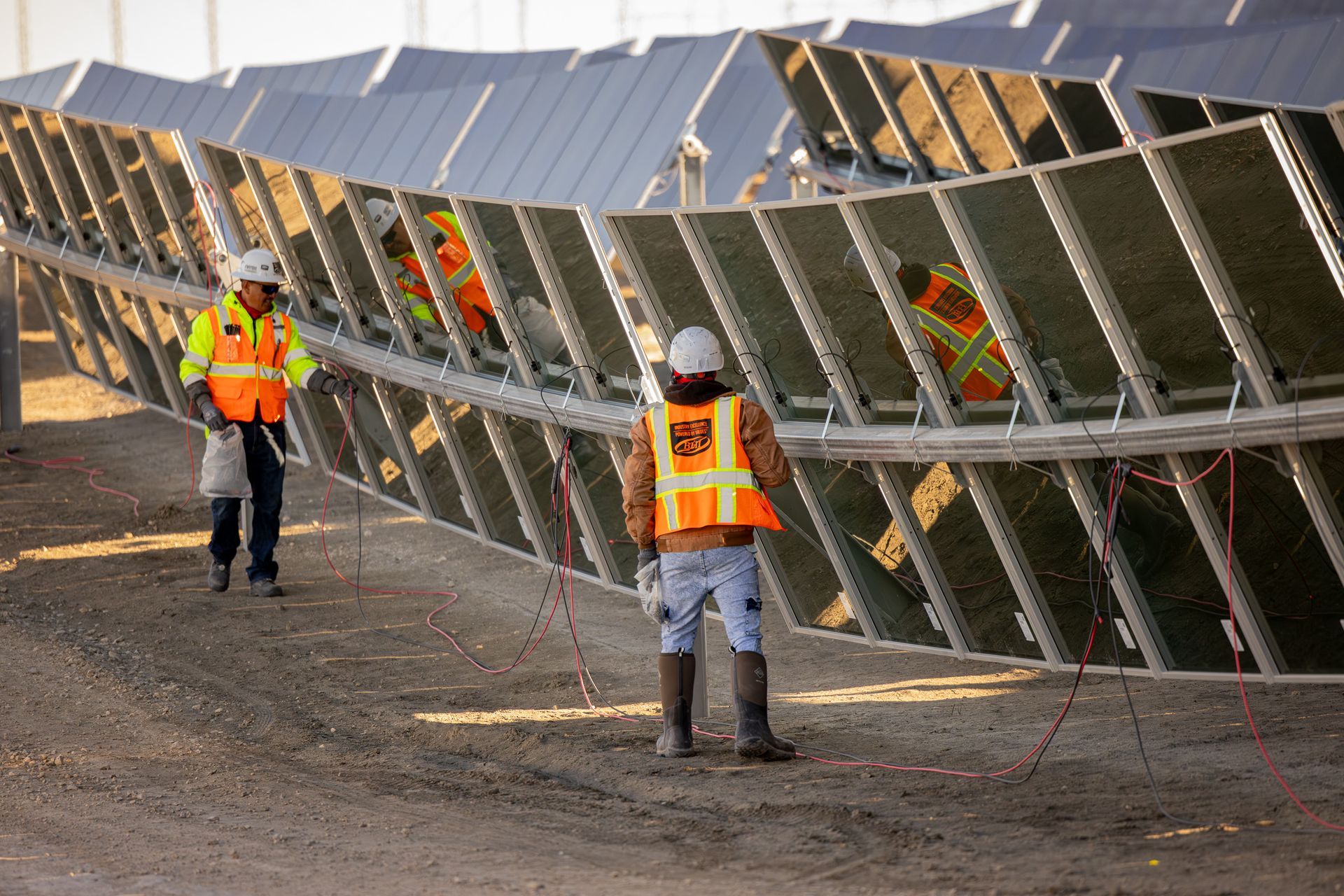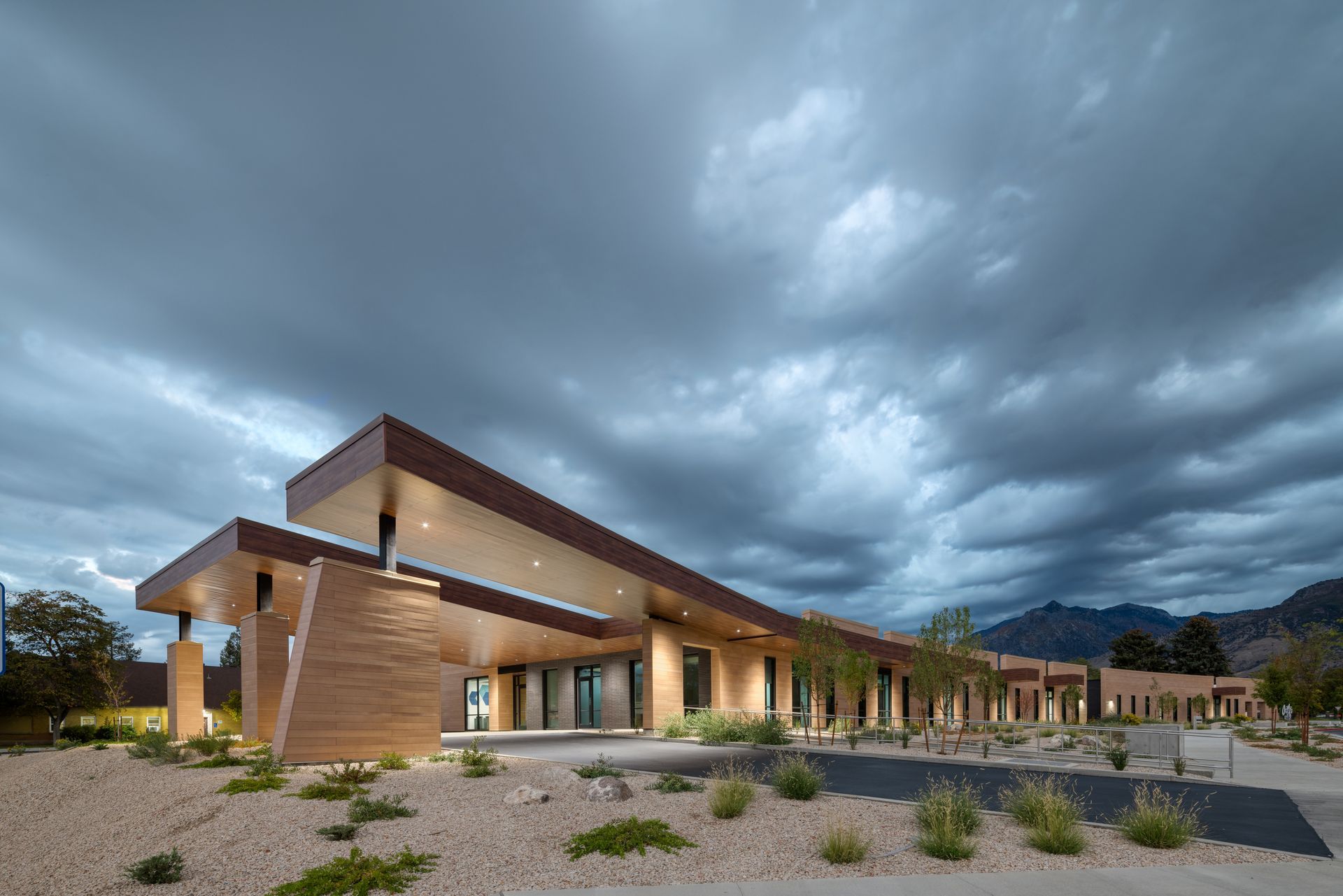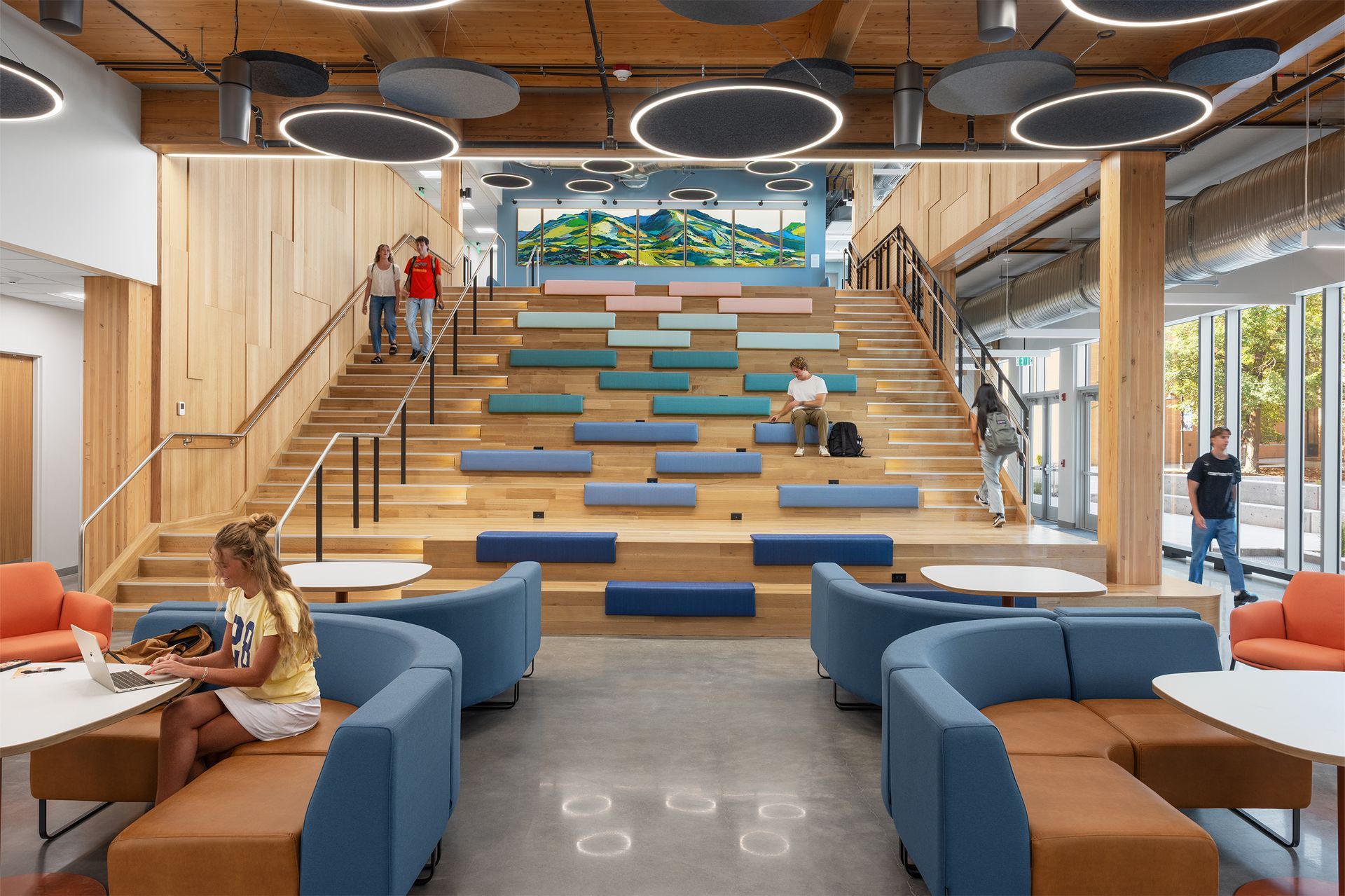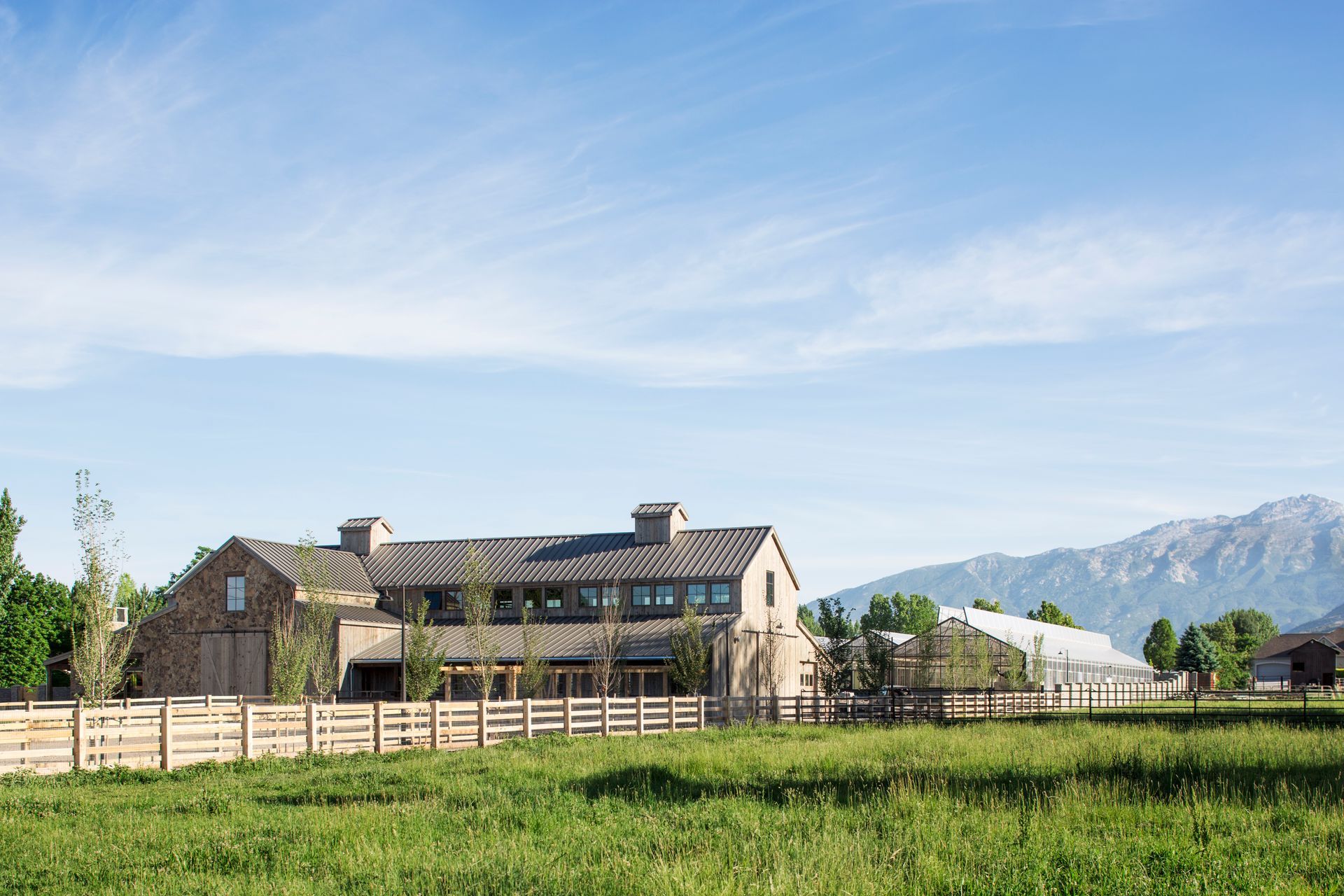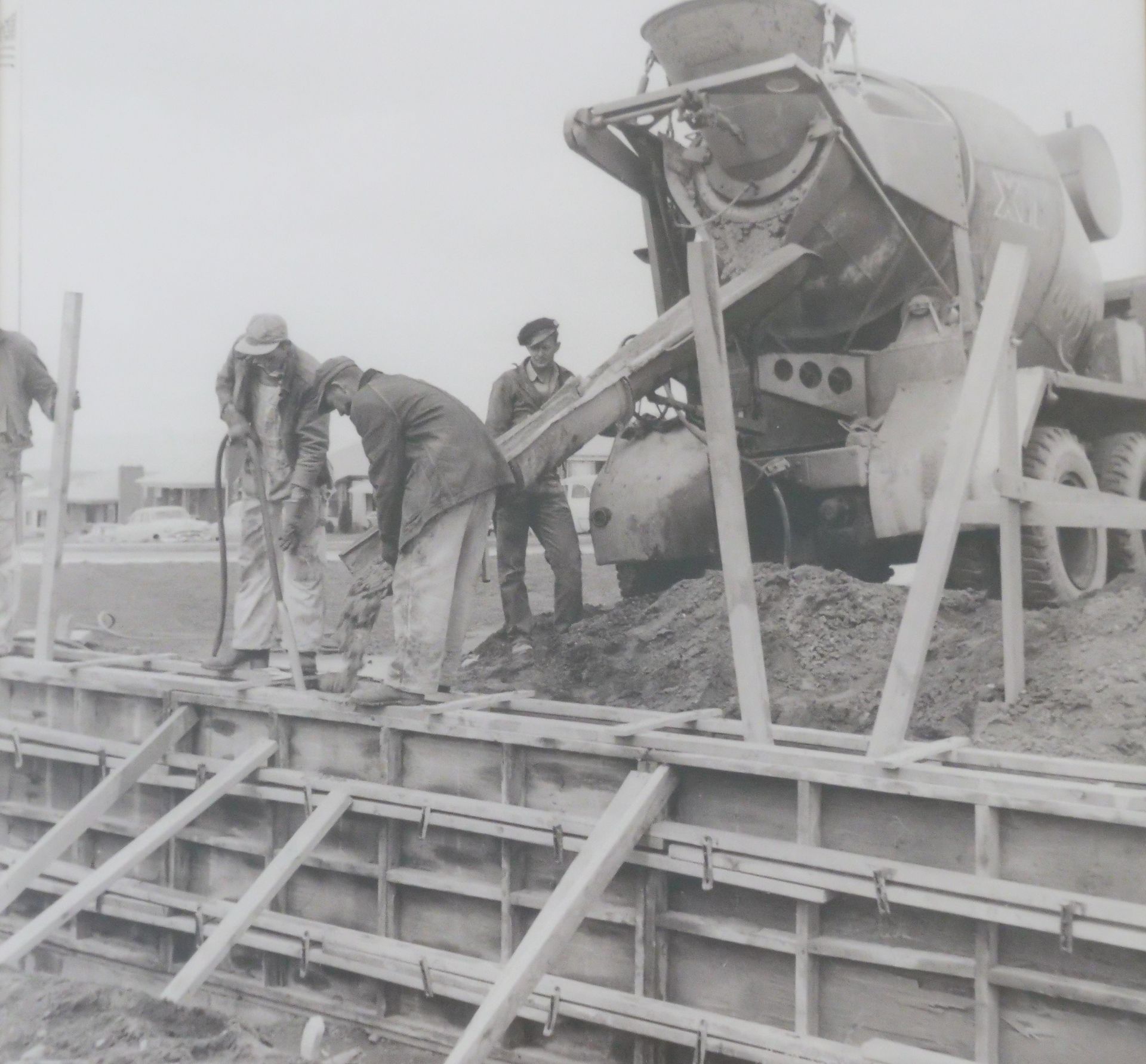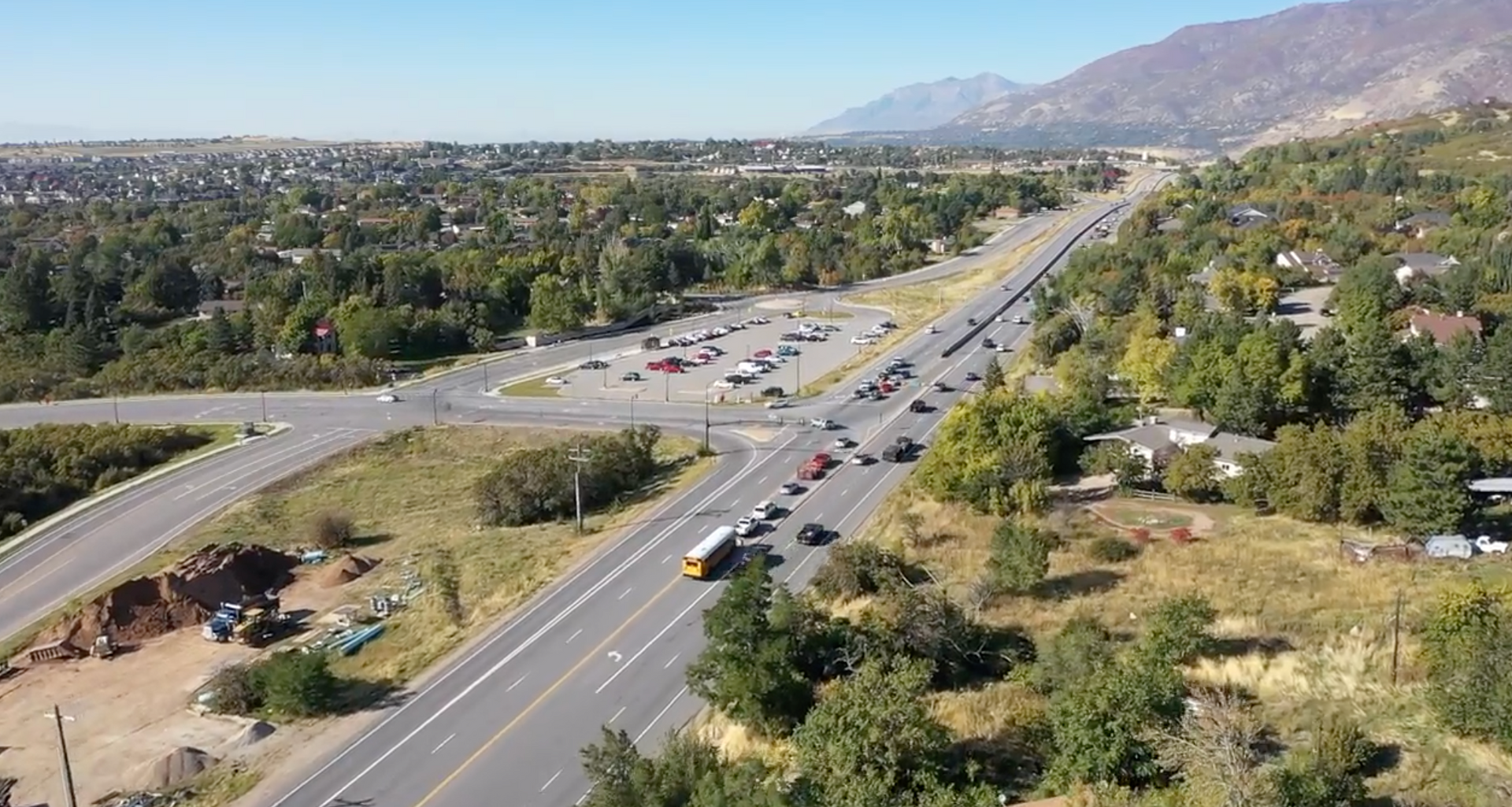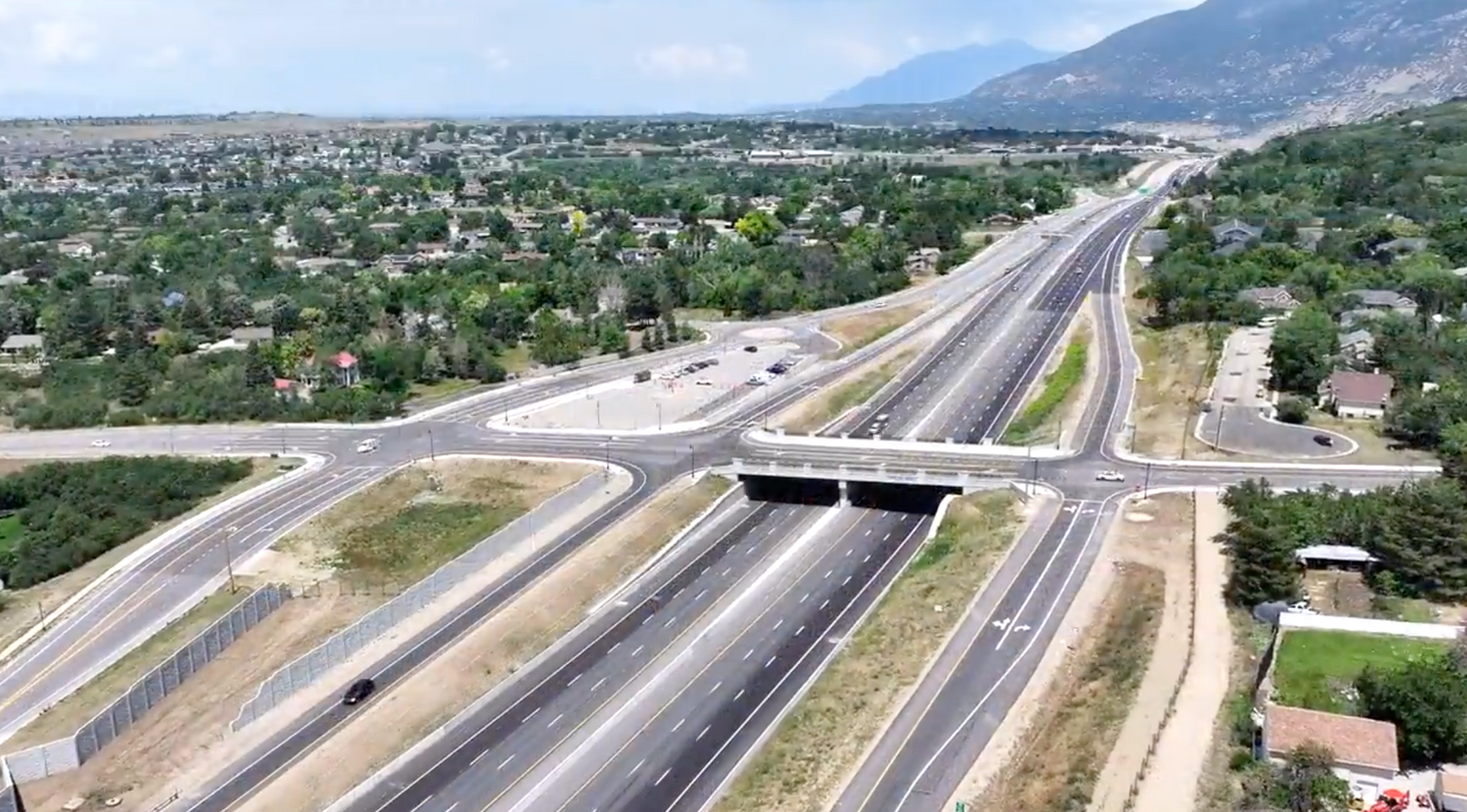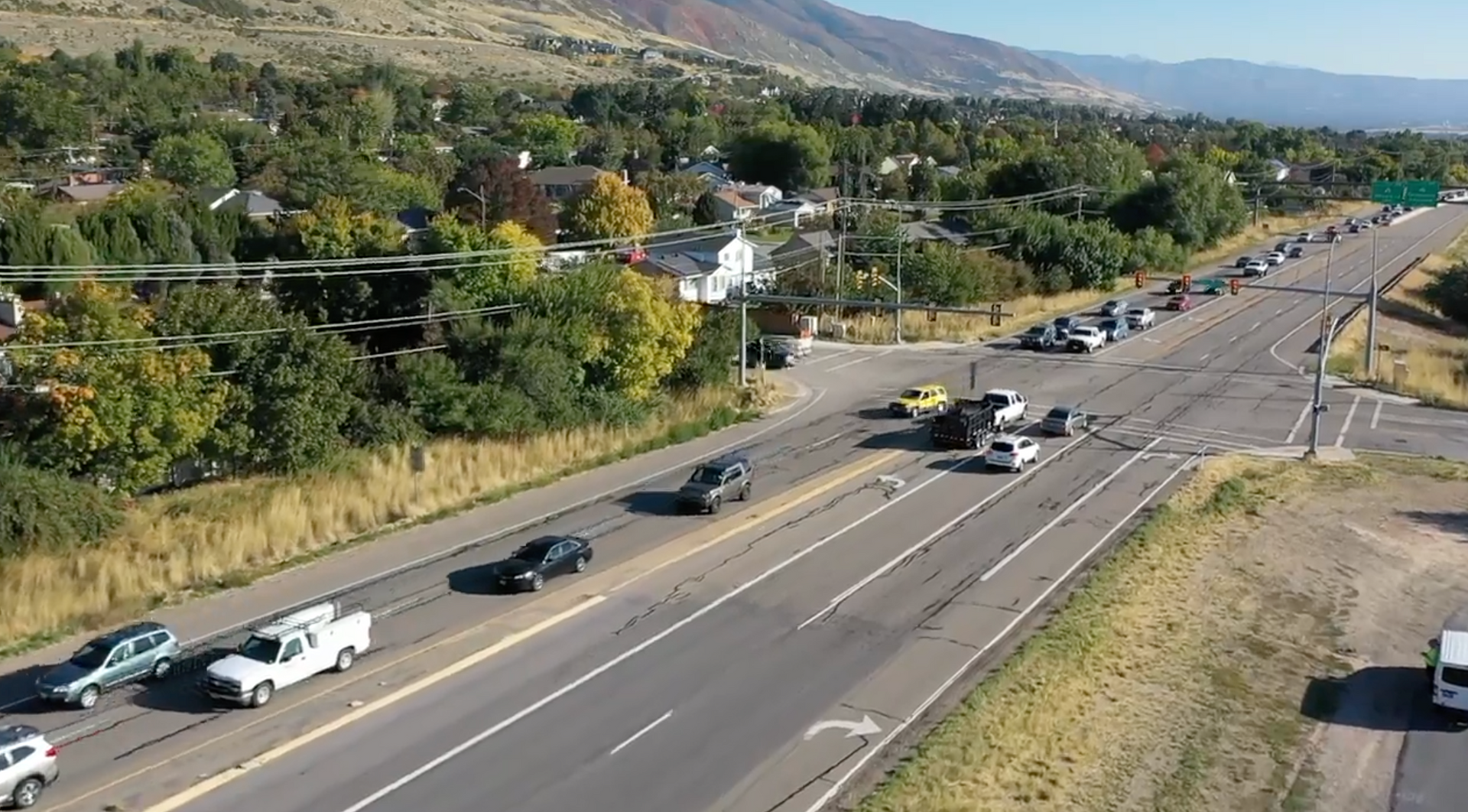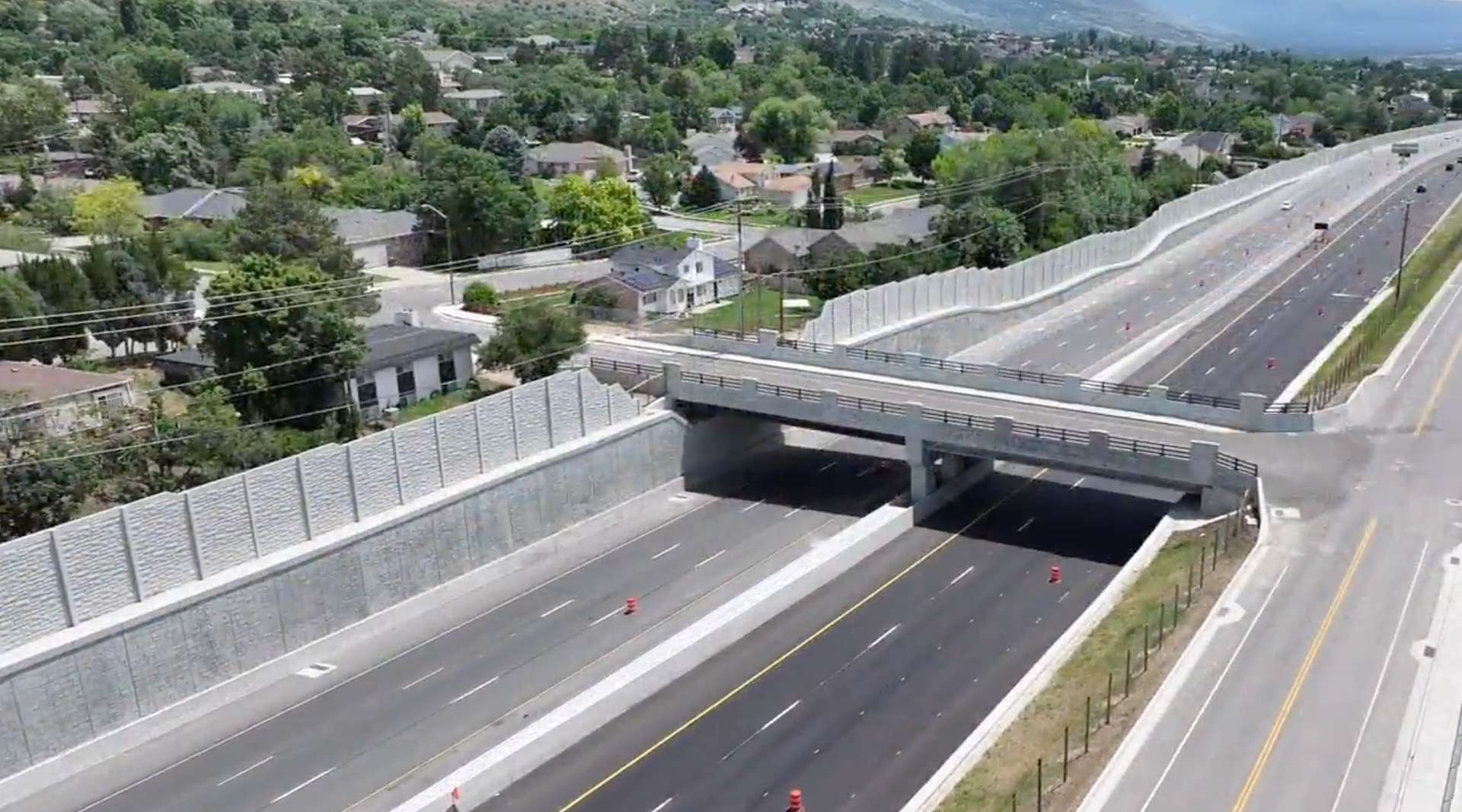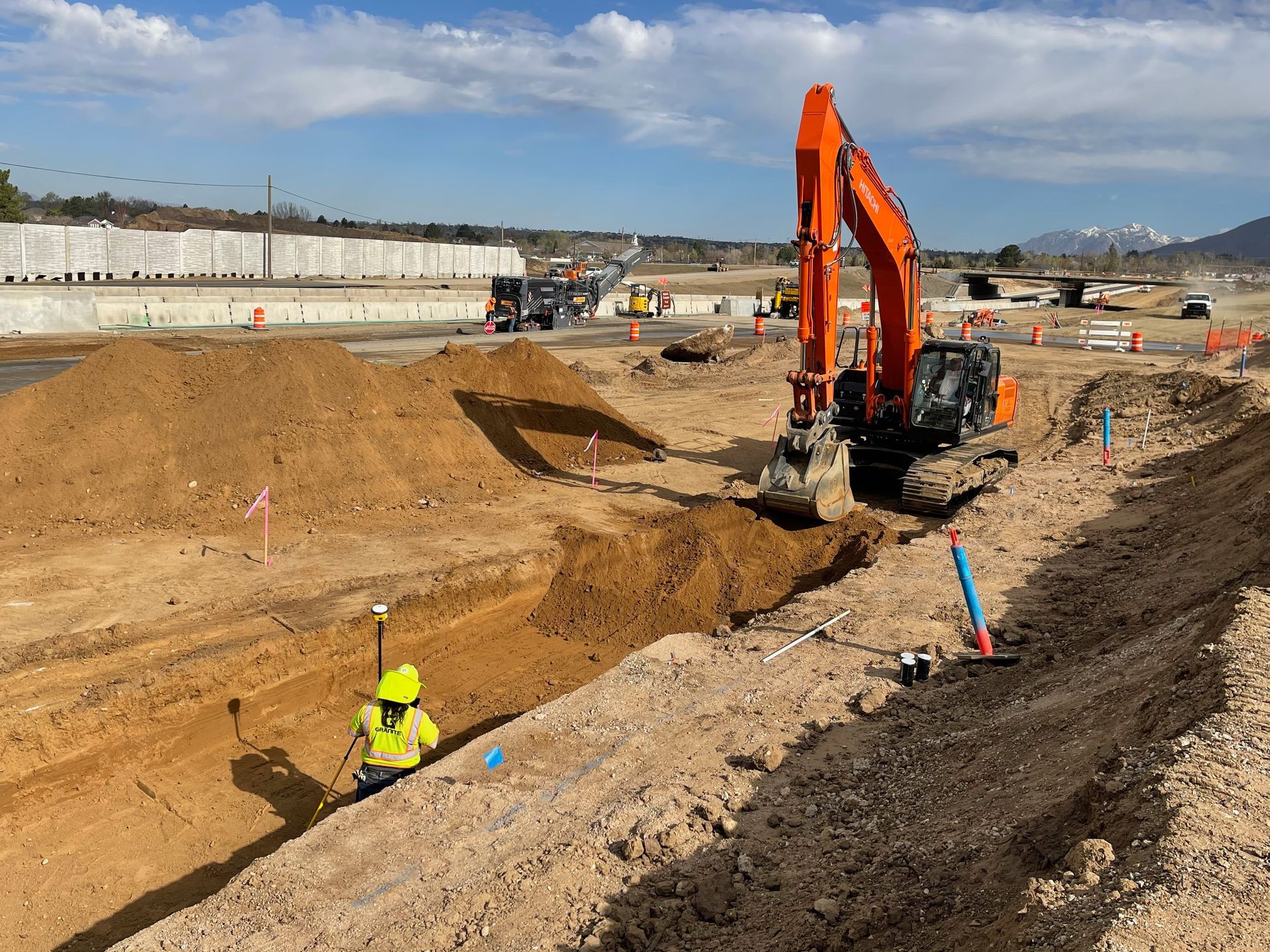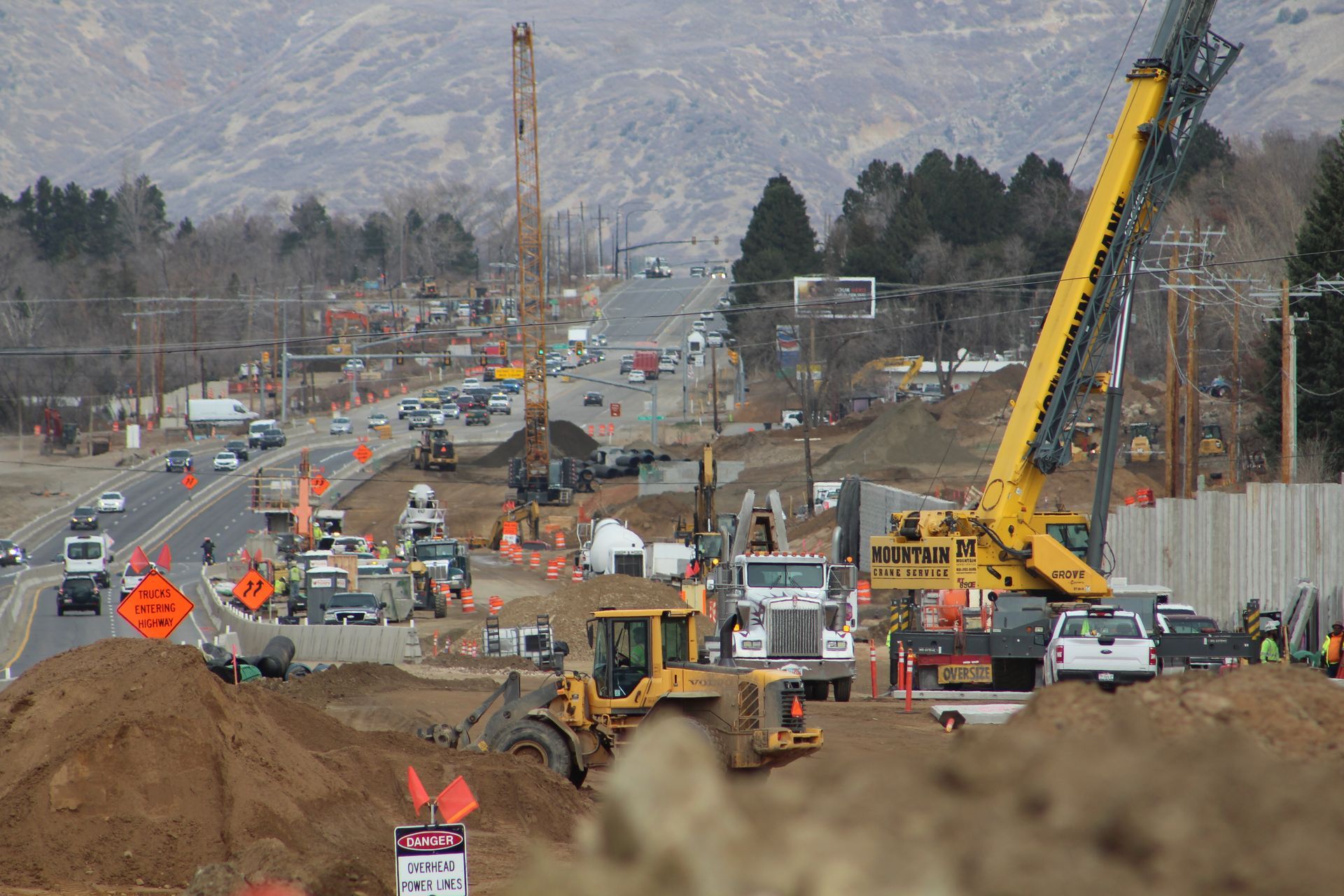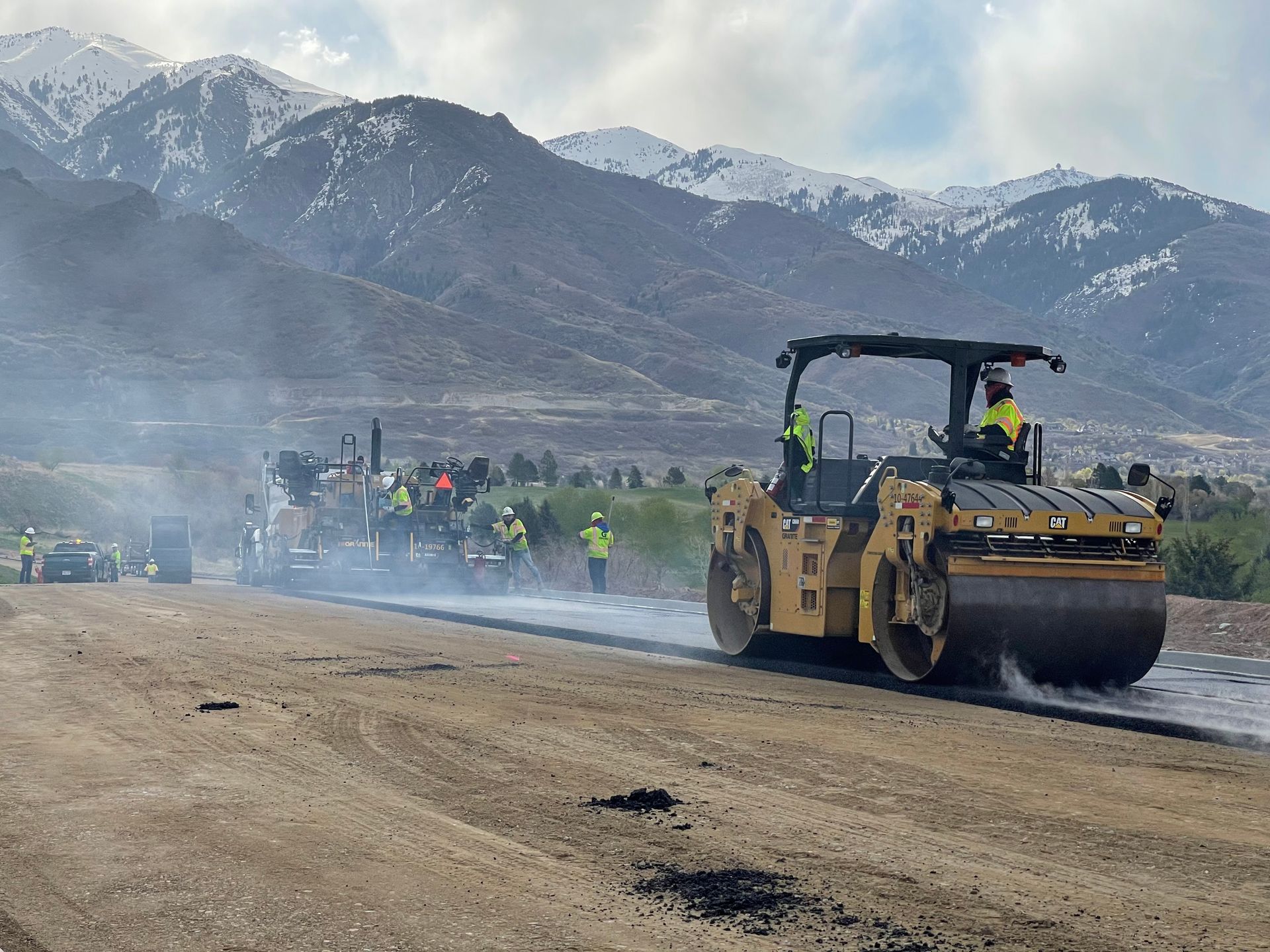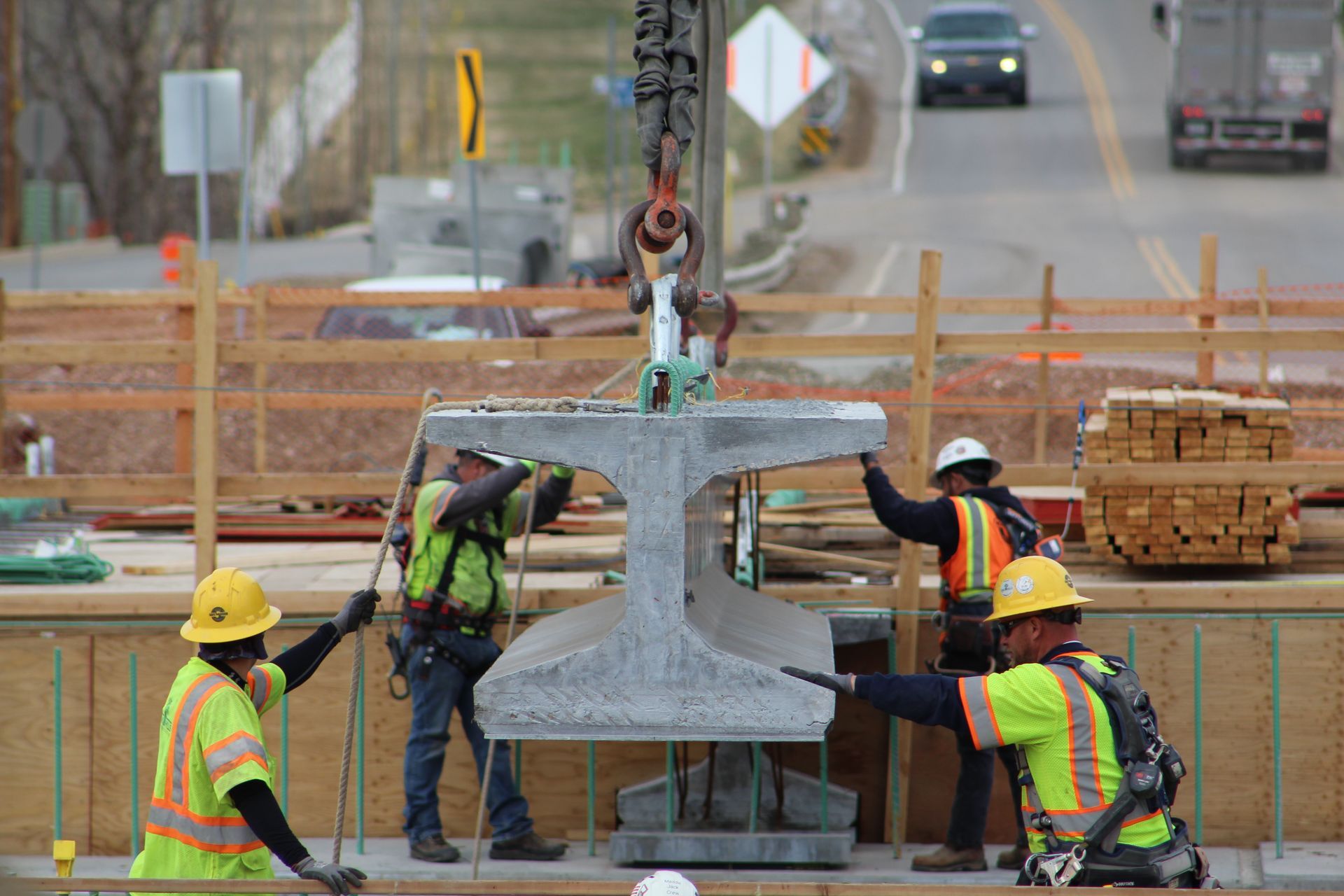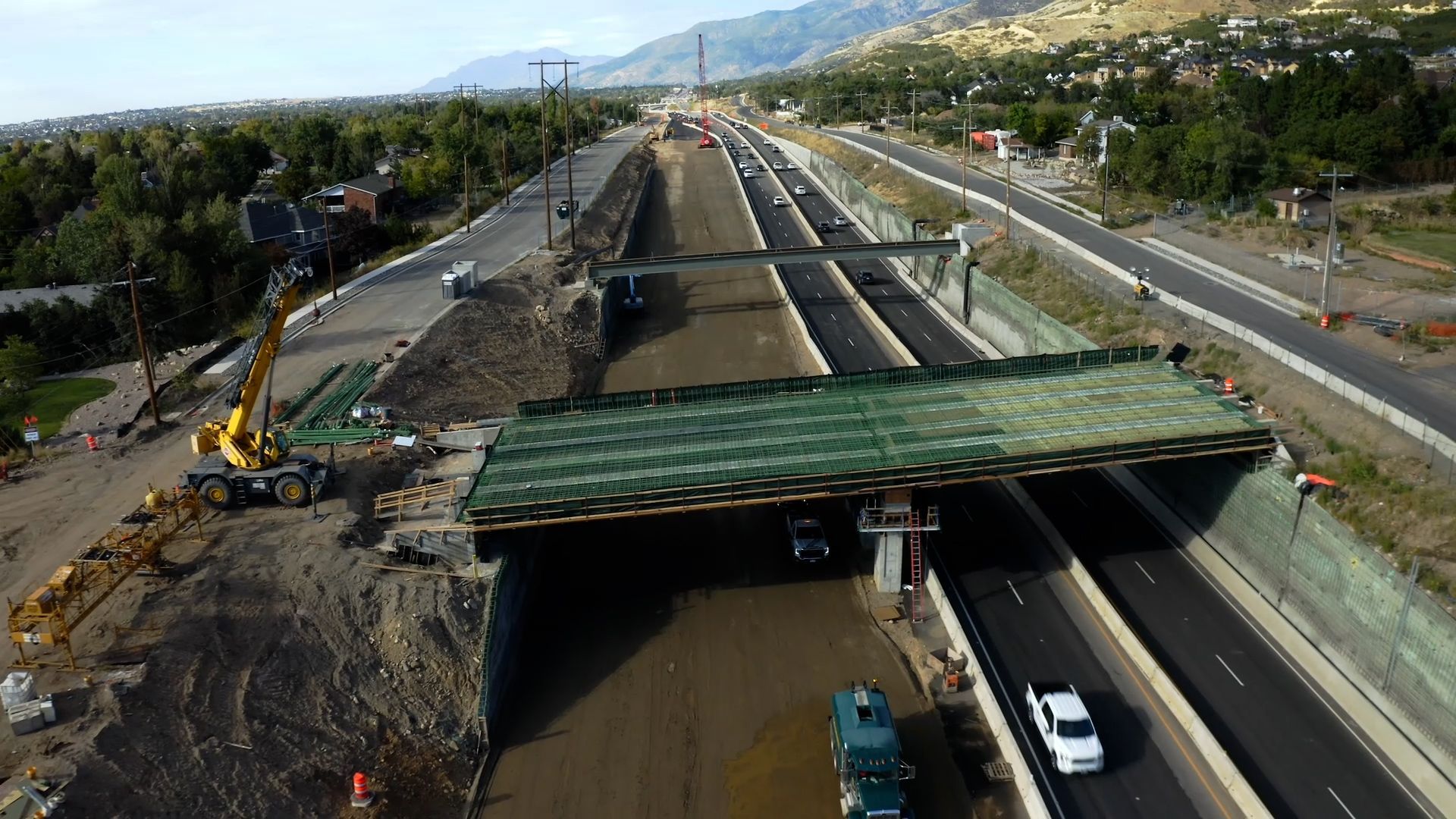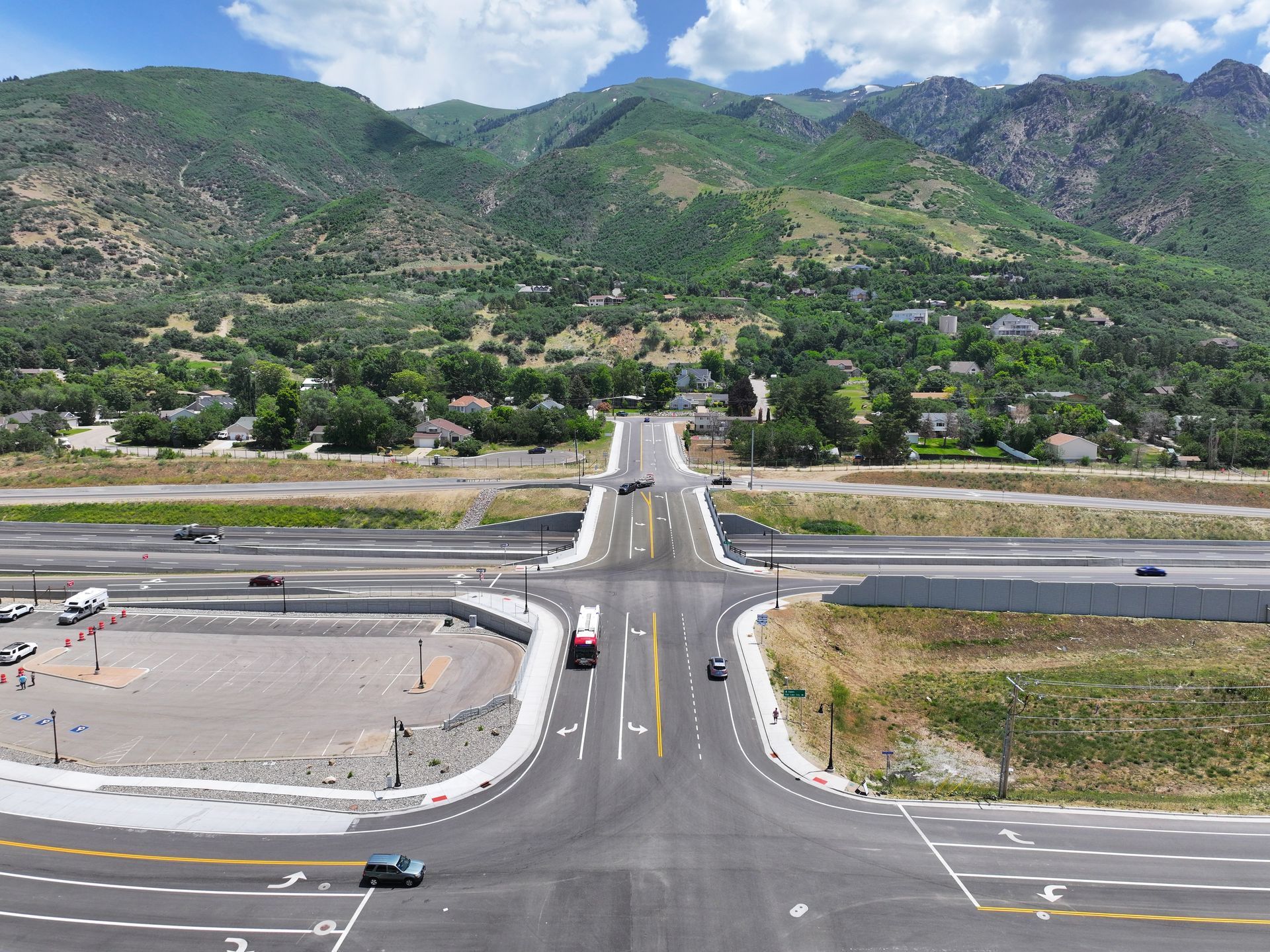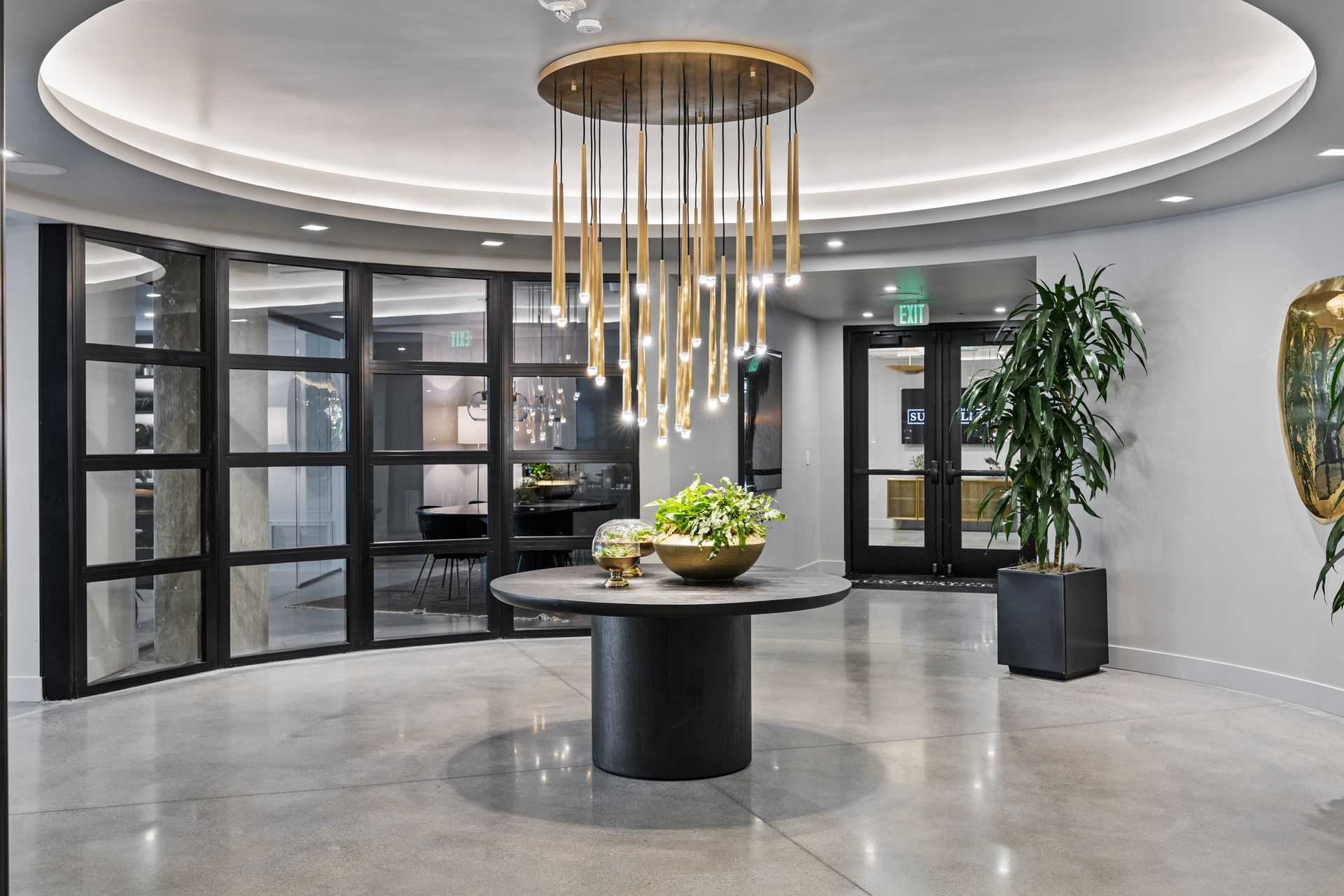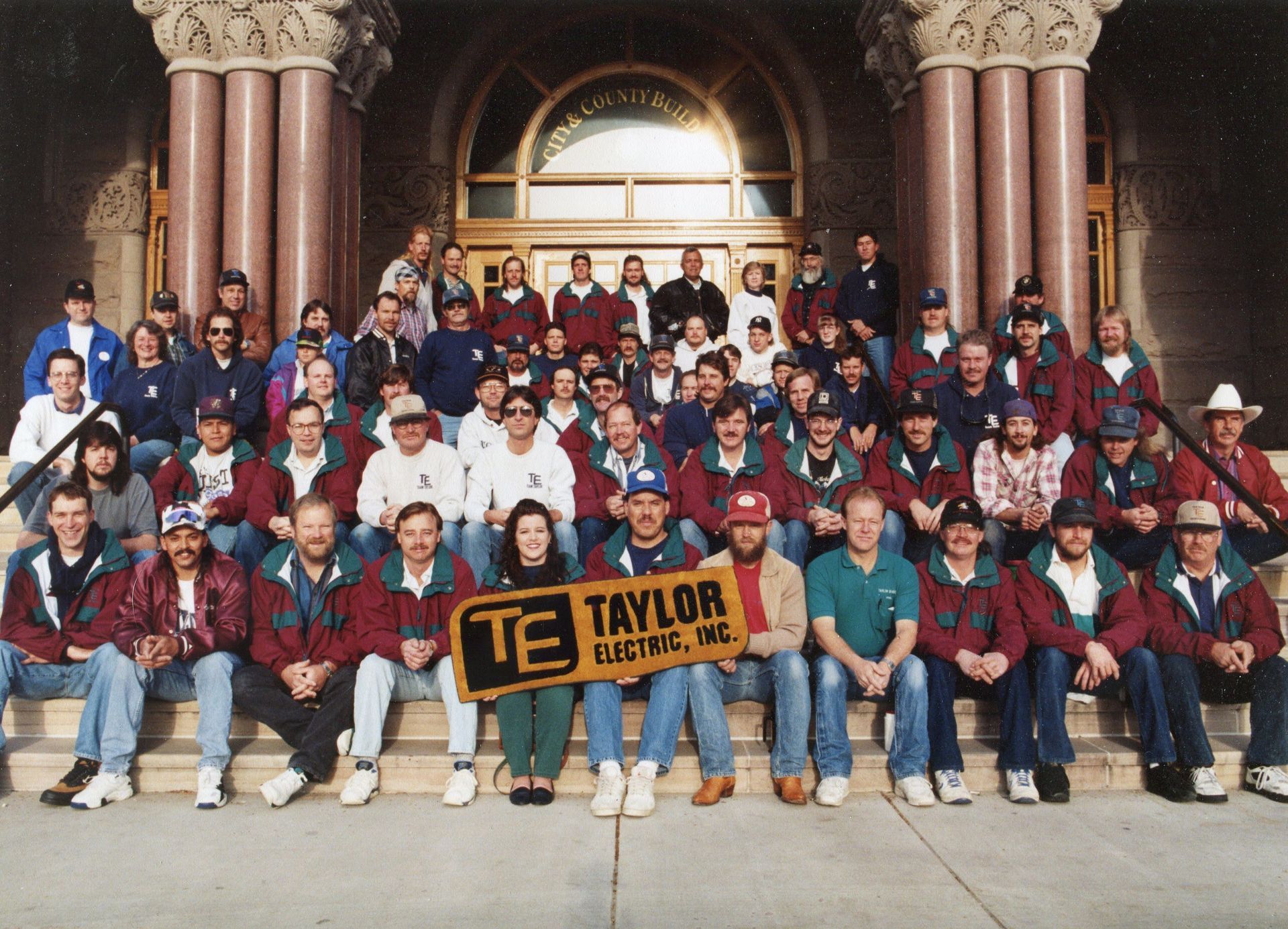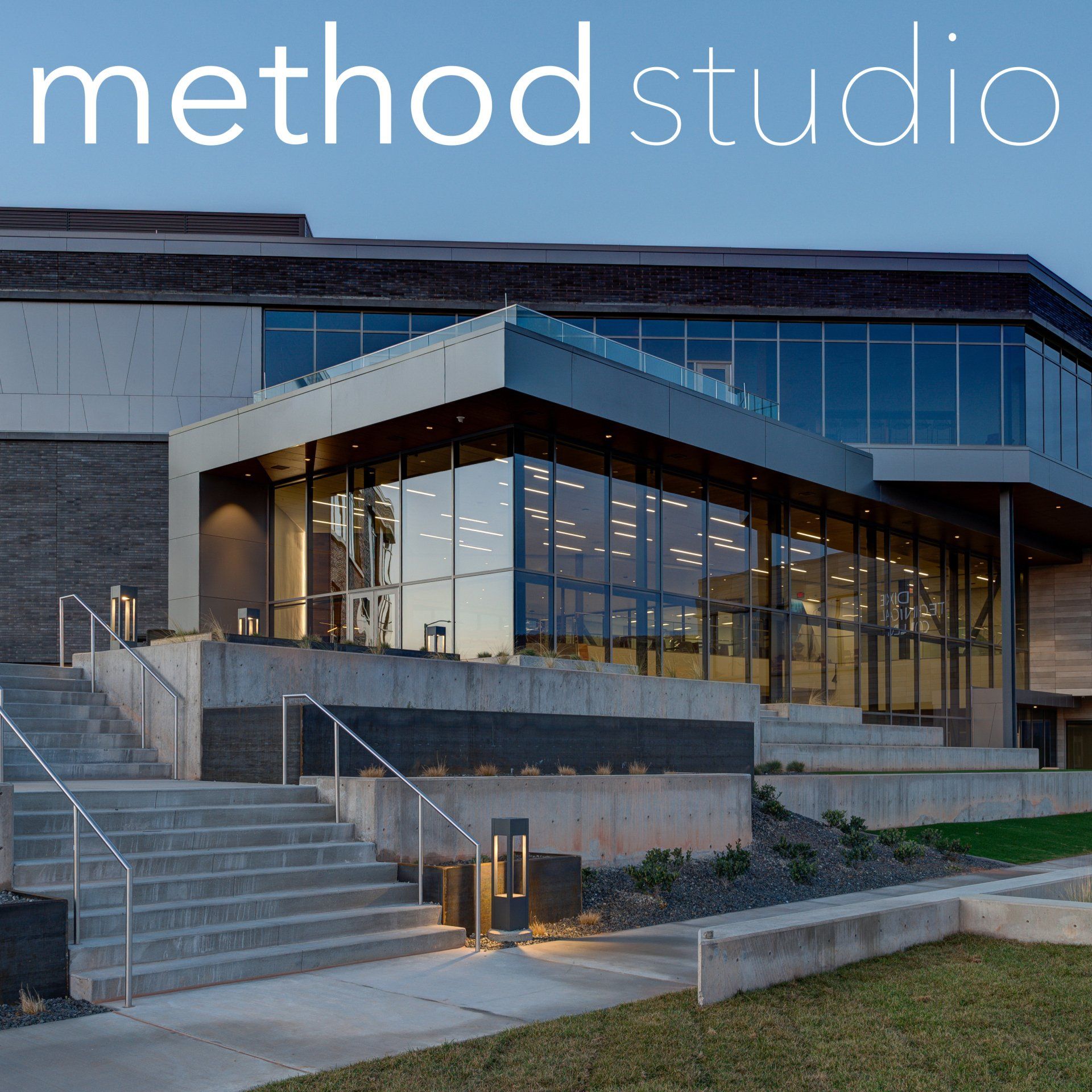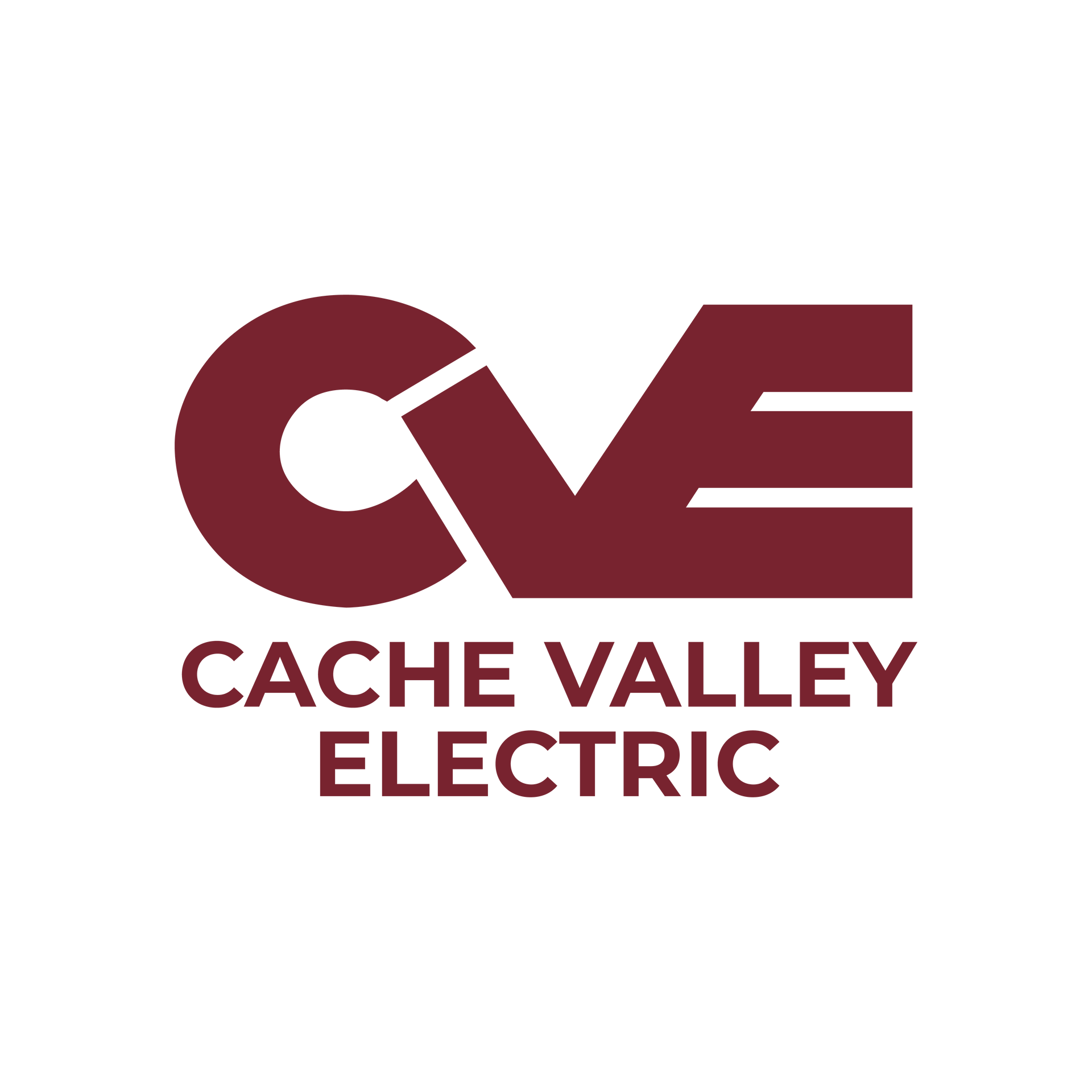As UDOT's first -ever 'Progressive Design-Build', the complex $526 million reconstruction transformed US-89 into a modern highway while mitigating public concerns. By Brad Fullmer
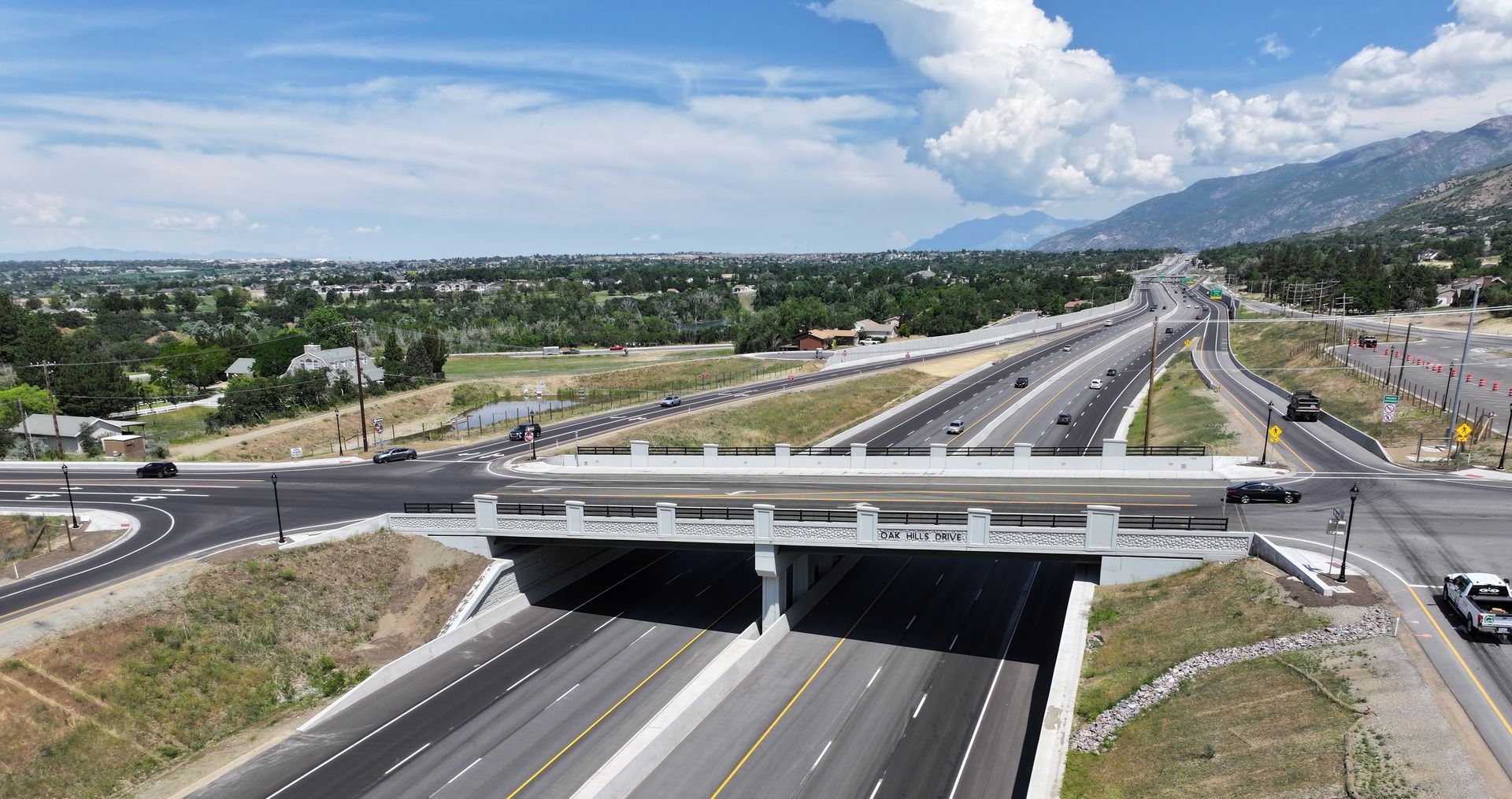
Before and after photos illustrate the dramatic transformation of this major transportation corridor through Davis County—from cumbersome signalized intersections to free-flowing single-point urban interchanges (SPUI). (photos courtesy UDOT)
Challenging Scope of Work
This project was a Herculean feat with myriad impressive upgrades and challenges overcome to even be able to construct this modern highway system, including:
• The removal of more than one million CY of dirt, much of which was fortuitously utilized on the nearby West Davis Corridor project.
• Navigating around and relocating a maze of complicated utility infrastructure, including coordinating with Weber Basin Water Conservancy District and the Bureau of Reclamation on the protection of a 78-in. aqueduct, along with an 8-in. Holly Oil line that carries 100,000 barrels daily, each of which ran the length of the project and had to be designed around.
• Converting six signalized intersections into grade-separated interchanges, including four new interchanges with on- and off-ramps at 400 North in Fruit Heights and at Oak Hills Drive, Gordon Avenue, and Antelope Drive in Layton.
• Widening the highway to three lanes in both directions.
• The removal and replacement of nine miles of asphalt pavement in each direction.
• The creation of a new frontage road system parallel to the highway, improving access to local
neighborhoods and making safer cycling routes.
• Construction of eight new bridges; six crossing the highway at the four interchanges and
at Nicholls Road in Fruit Heights and Crestwood Road in Kaysville, a bridge over the Weber River, and a utility bridge carrying irrigation pipe for Holmes Creek. Bridges ranged in size from 146 ft. to 161 ft. over the highway, with the Weber River bridge the longest at 188 ft.
• The installation of large noise walls 12 ft. to 22 ft. tall and tied into a well-fortified system of soil nail walls.
• Addition of a new right-turn lane from eastbound I-84 to southbound US-89 that allows
drivers to continue through the intersection without stopping, and the extension of the on-ramp entrance for drivers traveling on northbound US-89 to eastbound I-84.
• Gordon Avenue was extended to create a new east-west connection from I-15 to US-89 and
accommodate Layton City's plans for a future town center.
• Installation of three new pedestrian tunnels to enable future city and county trail expansions,
along with a new multi-use trail to connect the South Weber frontage road to Valley View
Drive.
• Other major elements included pedestrian structure bridges, traffic signals, lighting, ATMS, MOT, and storm drainage.
Built by Oak Hills Constructors—a 60/40 joint venture of Granite Construction of North Salt Lake and Ralph L. Wadsworth Construction of Draper—and designed by Horrocks Engineers of Pleasant Grove (Prime) and Michael Baker International of Midvale, much of the success of US-89 was a design that called for the highway to run under the six bridges (grade separations), which actually shaved time off the schedule and reduced project cost.
"It was the right decision," said Brian Atkinson, Principal and Design Manager for Pleasant Grove-based Horrocks Engineers. "I love how it fits the terrain. Overall, it was just a better solution. I don't think we would have gotten there if it wasn't in this collaborative environment."
Excavating down to 28 ft. deep in some sections like the Nicholls Road and Crestwood Road bridges was a sizeable task, said Romero. "One of the biggest concerns residents had was how [grade separations] would impact the community. We evaluated different profiles and took them under cross streets."
The right-of-way acquisition underwent notable positive transformations, according to Horrocks. Typically, additional land is procured to ensure project security, which can yield favorable results. However, capitalizing on the increased collaboration of the progressive design-build approach, the team was able to acquire just the right amount of land, minimizing unnecessary impacts on the landowners. The process was executed seamlessly, leaving a positive imprint on both the project, and the affected residents.
Rance Pickering, Project Manager for Granite Construction, added that the design of the project was ingenious in that it provided benefits to the local community and traveling public midway through the project, allowing traffic flow to run in two lanes in each direction.
"Traffic was flowing at a higher speed and safer through the corridor, offering benefits to the public a year and a half in," he said. "Progressive design-build allowed us ultimately to give the client the project they wanted."
"This project had some huge challenges. It's an environmentally sensitive area," added Scott Wiscombe, Construction Manager for Granite. "There were a lot of challenges just in how it was going to be built. The right thing to do was go PDB."
Pickering also praised the JV contractor team for working well together and having the project fully opened by the end of June.
"When we set this contract in February 2020, as soon as we started Covid hit, we had floods, [inclement] weather, an earthquake—there was a lot stacked up against us," said Pickering. "It would have been easy to say 'Hey, we need more time', but we were able to work through [challenges]—it's who we are. We hit that date, and I'm proud of that."
Wight said UDOT's second PDB project is underway, with the JV team of Granite Construction and W.W. Clyde of Orem reconstructing 5600 South/I-15 in Roy, a $330 million contract that will run through 2026.
"I think (PDB) is specific to complicated jobs," said Wight, mentioning community input, a challenging engineering scope, significant third-party owners, complicated utilities and other unknown concerns as factors that can be mitigated by the delivery method. "This is a great tool in the toolbox to identify challenges up front."
" I think there is a lot of opportunity out there," added Romero. "(PDB) is not a silver bullet, not the right fit for all projects, but I think it's a great opportunity for the department to minimize risk, as well as the contractor."
US-89
Location: Farmington, Fruit Heights, Layton, South Weber
Cost: $400 Million
Delivery Method: Progressive Design Build
Length (miles): 9
Surface type: Asphalt
No. of Bridges: 8
Project Team
Owner: UDOT
Owner’s Rep: Michael Romero
Design Team
Civil: Horrocks, Michael Baker, HDR
Structural: Horrocks, Michael Baker
Other Consultants: Gerhart Cole, Terracon (Geotechnical) Bowen Collins and Associates (WVWCD/BOR Relocations)
Construction Team
GC: Oak Hills Constructors (Granite Construction/Ralph L. Wadsworth Joint Venture)
Concrete: Oak Hills Constructors,
Asphalt Paving: Granite Construction
Rebar: CMC
Excavating: Oak Hills Constructors
Utilities: BHI; Whitaker Construction
Drainage: Brinkerhoff
CIP Barrier: Comers Concrete
Signs/Electrical/ATMS: Cache Valley Electric
Post and Panel Walls: Harper Concrete
